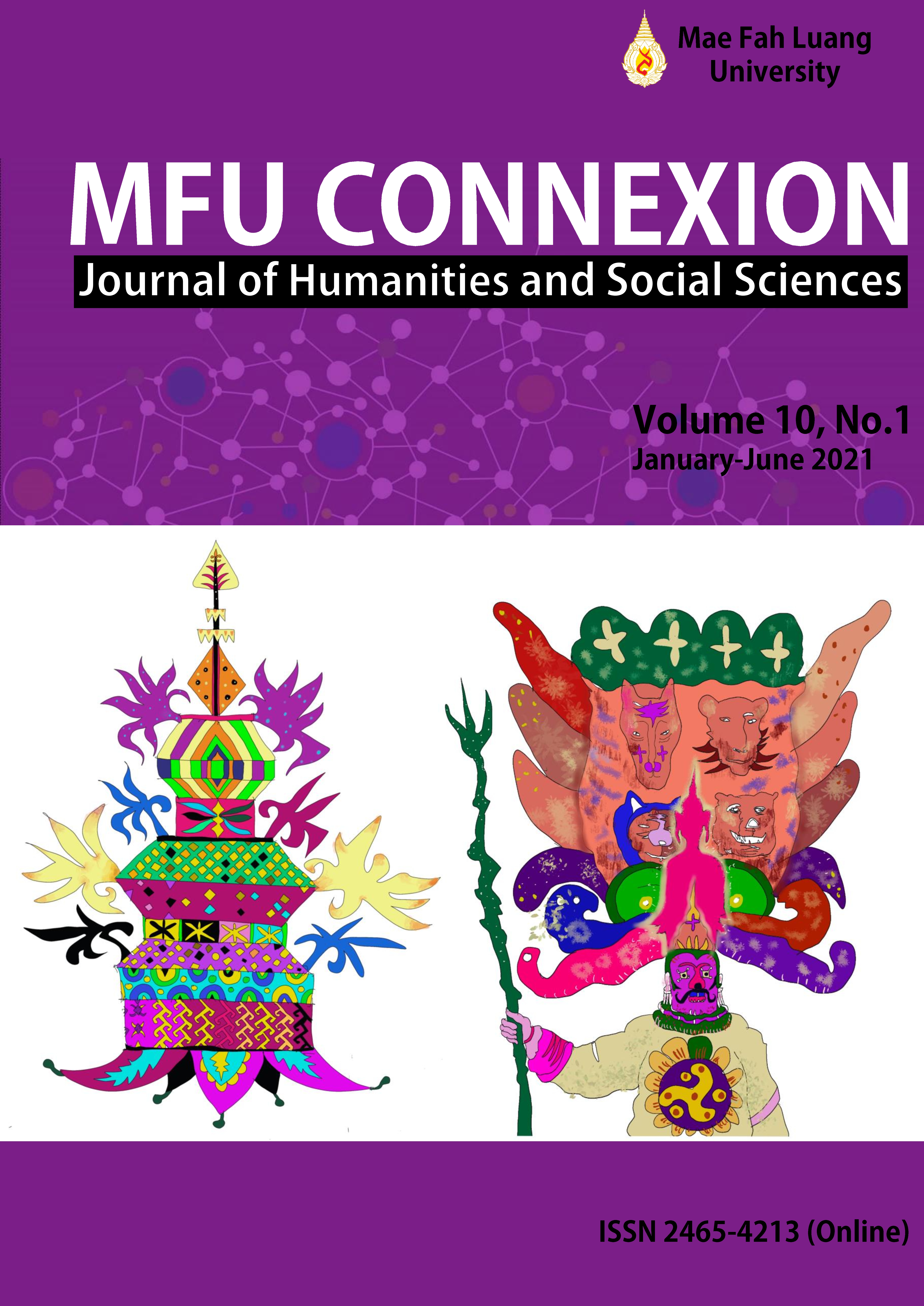Distinction Principle and The Use of Autonomous Weapons Systems in Armed Conflict
Main Article Content
Abstract
There has been widespread use of the autonomous weapon systems on the field of battle. The use of weapon in this pattern trends to increase in the future. In term of academic purpose, the concern has been on the consistency between the use of the autonomous weapon systems and the international humanitarian law, especially the impact on the civilians and non-military targets.
This article aims to examine problems in applying the distinction rule under the humanitarian law to the use of autonomous weapons systems and the approach to develop such principle by analyzing the legal principles under Geneva Conventions, 1949 and other relevant laws, the application of international laws by the International Court of Justice, the international seminar reports, the reports of international organizations and the academic journals.
The study finds that the complication of technology leads to the mistakes in using the Autonomous Weapons and the pattern of use that is not clear between civilian and military targets brings about problem in controlling the use of autonomous weapon systems. The recommendation is to develop measures to examine the use of autonomous weapons systems before use in order that the use of autonomous weapons be in line with the Distinction Principle and builds up measures in intervening the use of autonomous weapons systems in the needed cases in order not to affect the target beyond the military purpose.
Article Details
Copyright
Connexion: Journal of Humanities and Social Sciences has an exclusive right to publish the accepted articles in any form. However, the author retains the following rights:
1. The right to the ownership of the article;
2. The right to use all or part of the article in his/her other works;
3. The right to re-produce the article for personal use or for use in the author’s organisation, in which case the author must obtain permission from Connexion: Journal of Humanities and Social Sciences;
4. The right to make copies of all or part of the work for educational use or for the author’s use in classroom teaching; and
5. The right to include the work (both the preprinted and printed versions) in an institutional repository.
References
Boothby, W. (2017) Space weapons and the law, International Law Studies, vol. 93, pp. 179-214.
Boulanin, V., Devison, N., Goussac, N., & Carlsson, M, P. (2020) Limits on autonomy in weapon systems: Identifying practical elements of human control, Solna, Sweden: Stockholm International Peace Research Institute.
Cavas, C, P. (2017) New houthi weapon emerges: A drone boat, Available: https://www.defensenews.com/digital-show-ailies/idex/2017/02/19/new-houthi-weapon-emerges-a-drone-boat/ [30 May 2021]
Deguchi, A., Hirai, C., Matsuoka, H., Nakano, T., Oshima, K., Tai, M., & Tani, S. (2018) ‘What is society 5.0?’, in Society 5.0: A people-centric super-smart society, pp. 1-23, Gateway East, Singapore: Springer Singapore.
Dinstein, Y. (2010) The conduct of hostilities under the law of international armed conflict, New York: Cambridge University Press.
Hagström, M. (2016) ‘Characteristics of autonomous weapon systems’, in Autonomous weapon systems: Implications of increasing autonomy in the critical function of weapons, pp. 23-25, Geneva, Switzerland: International Committee of the Red Cross.
Hanckaerts, J., & Doswald-beck, L. (2009) Customary international humanitarian law: Volume I rules, New York: Cambridge University Press.
International Court of Justice (ICJ). (1996) 1996 legality of the threats or use of nuclear weapons, San Francisco, CA: Author.
International Committee of the Red Cross (ICRC). (2016) Autonomous weapon systems: Implications of increasing autonomy in the critical function of weapons, Geneva, Switzerland: Author.
International Committee of the Red Cross (ICRC). (2021, 12 May) ICRC position on autonomous weapon systems, Available: https://www.icrc.org/en/document/icrc-position-autonomous-weapon-systems [10 June 2021]
International Committee of the Red Cross (ICRC). (1977) Protocol additional to the Geneva conventions of 12 August 1949, Geneva, Switzerland: Author, Available: https://www.icrc.org/en/doc/assets/files/other/icrc_002_0321.pdf [10 June 2021]
International Maritime Organization (IMO). (2018, 18 January) Analysis of regulatory barriers to the use of autonomous ships: Final report, London, United Kingdom: Author, Available: https://www.imokorea.org/fileup/MSC%2099-INF.3%20-%20Final%20Report%20Analysis%20of%20Regulatory%20Barriers%20to%20the%20use%20of%20Autonomous%20Ships%20(Denmark).pdf [10 June 2021]
Klein, N. (2019) Maritime autonomous vehicles within the international law framework to enhance maritime security, International Law Studies, vol. 95, pp. 244-271.
Kraska, J. (2010) The law of unmanned naval systems in war and peace, Journal of Ocean Technology, vol. 5, pp. 44-68.
Lister, T. (2021, 18 May) Israel’s iron dome doesn’t chase every rocket it sees, Available: https://edition.cnn.com/2021/05/18/middleeast/israel-iron-dome-defense-gaza-rockets-intl-cmd/index.html [30 May 2021]
Melzer, N. (2009) Interpretive guidance on the notion of direct participation in hostilities under international humanitarian law, Geneva, Switzerland: International Committee of the Red Cross.
Nasu, H., & Letts, D. (2020) The legal characterization of lethal autonomous maritime systems: Warship, torpedo, or naval mine?, International Law Studies, vol. 96, pp. 79-97.
Ohlin, J, D. (2016) The Combatant’s Stance: Autonomous Weapons on the Battlefield, International Law Studies, vol. 92, pp. 1-30.
Pagallo, U. (2013) The law of robot: Crimes, contracts and torts, London: Springer.
Pictet, J. (1975) Humanitarian law and the protection of war victims, Geneva, Switzerland: Henry Dunant Institute.
Rafael Advanced Defense Systems LTD., (n.d.) Iron dome; Dual- mission counter rocket, artillery and mortar (C-RAM) and very short range air defense (V-SHORAD) system, Available: https://web.archive.org/web/20120710092155/http://www.rafael.co.il/marketing/SIP_STORAGE/FILES/0/1190.pdf [20 May 2021]
Sharp, J. M. (2015) U.S. foreign aid to Israel, Washington, DC: Congress Research Service.
Stephens, D. (2018) The international legal implications of military space operations: Examining the interplay between international humanitarian law and the outer space legal regime, International Law Studies, vol. 94, pp. 75-101.
Tangsiri, S. (2018, 8 August) New types of weapons need new forms of governance (หนทางสู่การกำกับดูแลอาวุธรูปแบบใหม่: ข้อท้าทายว่าด้วยกลไกที่ใช้กำกับดูแลอาวุธในยุคปัจจุบัน), Available: https://blogs.icrc.org/th/2018/08/08/weapons-governance-new-types-weapons-need-new-forms-governance/ [10 June 2021] (in Thai)
Tangsiri, S. (2019, 25 April) Is armed control over emerging technologies just a peacetime luxury? Lessons learned from the First World War (จริงหรือไม่ที่การควบคุมอาวุธจากเทคโนโลยียุคใหม่เป็นเรื่องฟุ่มเฟือยเกินไปในยามสันติ: สงครามโลกครั้งที่ 1 ให้บทเรียนอะไรในประเด็นนี้), Available: https://blogs.icrc.org/th/2019/04/25/arms-control-over-emerging-technologies-peacetime-luxury-first-world-war/ [10 June 2021] (in Thai)
von Heinegg, W., H. (2017) Neutrality and outer space, International Law Studies, vol. 93, pp. 526-547.


